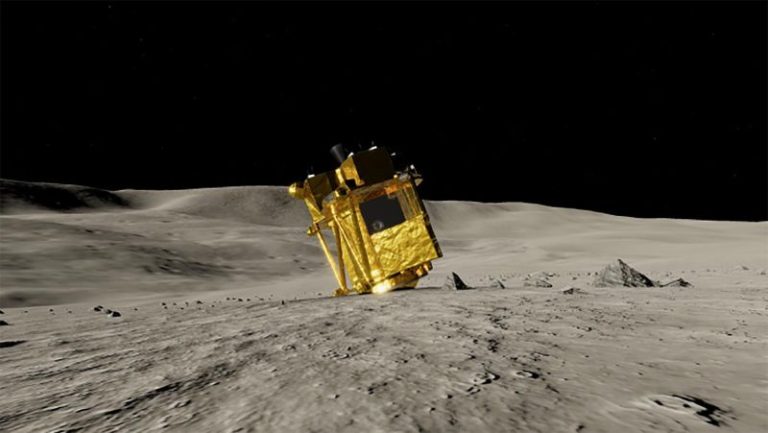Japan’s “Moon Sniper” robotic explorer is back in action, the country’s space agency said Monday, after a power issue forced the spacecraft to shut down upon landing on the moon 10 days ago.
The explorer executed a precise landing on January 19, making Japan only the fifth country to put a spacecraft safely on the lunar surface — but faced a critical issue almost immediately.
The spacecraft landed facing the wrong direction after one of its engines failed during landing, meaning its solar cells couldn’t generate electricity and it had to rely on limited battery power, according to the Japan Aerospace Exploration Agency (JAXA).
The agency shut off the lunar explorer to conserve its battery, saying it would automatically be restarted if its solar panel began generating power as the angle of the moon changed.
On Monday, JAXA announced on social media platform X that it had “succeeded in establishing communication with (Smart Lander for Investigating Moon, or SLIM) last night and have resumed operations!”
The explorer has also captured new images of the lunar surface, it added.
Its mission can be considered at least a “minimum success” because it achieved a precise and soft lunar landing using optical navigation, the agency has said. Now, Japan aims to use the lander to collect unprecedented information about a region of the moon called the Sea of Nectar.
The spacecraft touched down near a crater called Shioli — a Japanese female first name pronounced “she-oh-lee” — which sits about 200 miles (322 kilometers) south of the Sea of Tranquility, the region near the lunar equator where Apollo 11 first landed astronauts on the moon.
Multiple space agencies and countries have attempted moon landing missions over the past year, leading to a historic first as well as some failures.
India became the fourth country — after the United States, the former Soviet Union and China — to execute a controlled landing on the moon when its Chandrayaan-3 mission arrived near the lunar south pole in August.
The new lunar space race is partly driven by countries’ desire to access water trapped as ice in permanently shadowed regions at the lunar south pole. It could be used for drinking water or fuel as humanity pushes the bounds of space exploration in the future.

